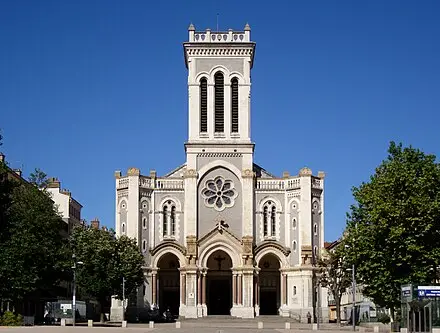
Saint-Étienne Cathedral, located in Metz, France, is renowned for its magnificent stained glass windows, which span several centuries and styles. Often referred to as the “Good Lord’s Lantern,” the cathedral boasts one of the largest expanses of stained glass in the world, covering approximately 6,500 square meters. These windows illuminate the interior with vibrant colors and intricate designs, creating a breathtaking spectacle that enhances the spiritual atmosphere of the cathedral.
Historical Windows
The oldest stained glass windows in Saint-Étienne date back to the 13th century. These medieval windows, characterized by their rich, deep colors and detailed iconography, depict biblical scenes and figures, serving both a decorative and didactic purpose. Notable among these is the rose window on the western façade, which portrays the Last Judgment with a dramatic and awe-inspiring composition.
Renaissance and Baroque Additions
During the Renaissance and Baroque periods, new windows were added, reflecting the artistic trends of their times. These windows feature more naturalistic and dynamic figures, with an increased emphasis on realism and depth. The delicate balance of light and shadow in these pieces adds a new dimension to the cathedral’s interior. Therefore, showcasing the evolution of stained glass artistry.
Modern Masterpieces
In the 20th century, Saint-Étienne Cathedral became a canvas for modern artists like Marc Chagall. Chagall’s windows, installed between 1958 and 1968, bring a contemporary flair to the cathedral. His use of bold colors and abstract forms introduces a modernist perspective. While also maintaining the spiritual essence of traditional stained glass art. These windows, located in the transept and the apse, depict various biblical themes with a distinctive Chagall touch, blending tradition with innovation.
Symbolism and Light
The stained glass windows of Saint-Étienne Cathedral are more than mere decorations. They are a theological and artistic narrative told through light and color. The interplay of light through these windows creates a mystical atmosphere, symbolizing divine presence and illuminating the sacred space. Each window, with its unique style and story, contributes to the cathedral’s overall magnificence. Thereby, building its reputation as a masterpiece of Gothic architecture.
Conclusion
Saint-Étienne Cathedral’s stained glass windows are a testament to the enduring legacy of stained glass art. Hence, reflecting centuries of artistic evolution and spiritual devotion. From medieval to modern, each window adds a chapter to the cathedral’s storied history, making it a truly luminous landmark.

Your writing has a way of resonating with me on a deep level. It’s clear that you put a lot of thought and effort into each piece, and it certainly doesn’t go unnoticed.